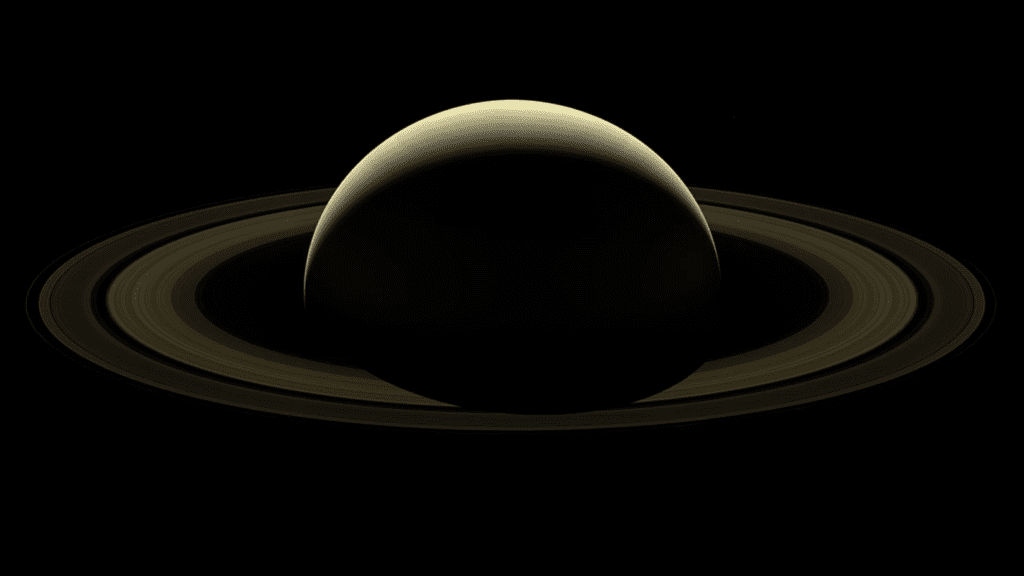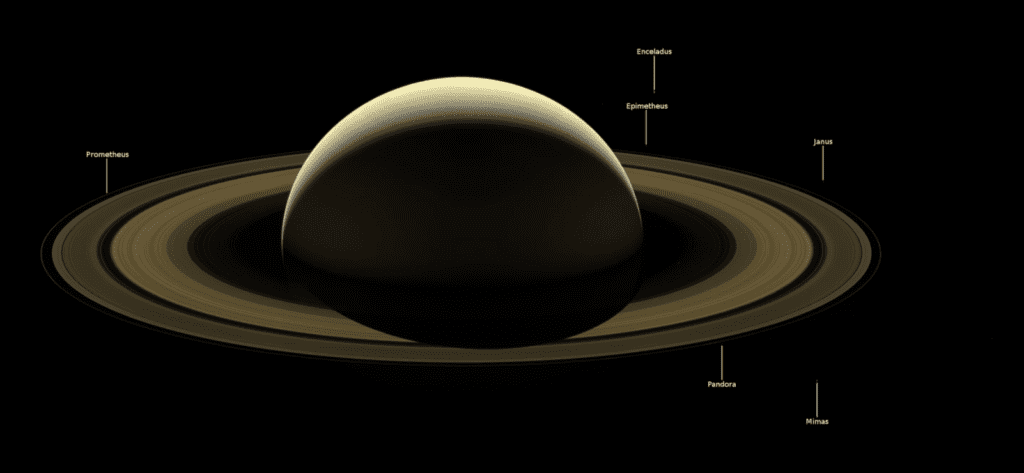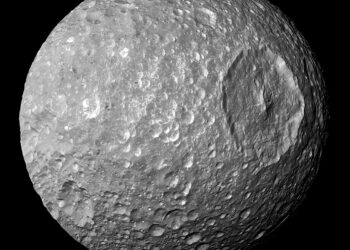On September 15, 2017, the daredevil Cassini spacecraft ended its 20-year voyage through space. It did so in style, plunging into Saturn’s atmosphere — the planet it had most closely studied in the past 13 years. Two days before spiraling into oblivion, the spacecraft fired the shutters of its wide-angle camera one last time. The result is this stunning full-body view of Saturn and its dazzling rings.

A total of 80 wide-angle images were acquired over two hours. This mosaic view was pieced together from 42 of these shots, which were taken using red, green, and blue spectral filters, which when combined produce a natural-color picture.
“It was hard to say goodbye, but how lucky we were to be able to see it all through Cassini’s eyes!”
Though rather faint, you can spot six of Saturn’s 53 moons in the image — Enceladus, Epimetheus, Janus, Mimas, Pandora, and Prometheus.
“For 37 years, Voyager 1’s last view of Saturn has been, for me, one of the most evocative images ever taken in the exploration of the solar system,” said Carolyn Porco, Cassini imaging team leader.
“In a similar vein, this ‘Farewell to Saturn’ will forevermore serve as a reminder of the dramatic conclusion to that wondrous time humankind spent in intimate study of our sun’s most iconic planetary system,” she added.

When it took the shot, Cassini was approximately 698,000 miles (1.1 million kilometers) from Saturn, facing the gas giant’s sunlit side about 15 degrees above the ring plane.
NASA’s Cassini-Huygens mission launched in 1997 and took seven years to reach its destination around Saturn. Over the course of its long mission, Cassini’s achievements were legion. Besides landing a freaking probe on Titan, a methane-filled world similar to the early days of Earth before life evolved, Cassini made the most planetary flybys of any spacecraft — over 100. Before arriving in Saturn’s orbit, Cassini circled Earth, Venus, and Jupiter.
“It was all too easy to get used to receiving new images from the Saturn system on a daily basis, seeing new sights, watching things change,” said Elizabeth Turtle, an imaging team associate at the Johns Hopkins University Applied Physics Laboratory, Laurel, Maryland. “It was hard to say goodbye, but how lucky we were to be able to see it all through Cassini’s eyes!”






